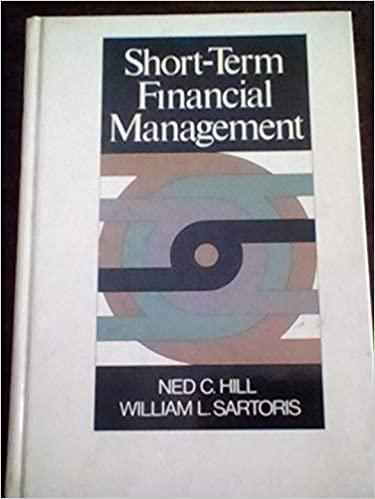Question
4. You have $10,000 to invest and you put $8,000 in stock C and $2,000 in stock D (the two stocks listed in Question 3).
4. You have $10,000 to invest and you put $8,000 in stock C and $2,000 in stock D (the two stocks listed in Question 3). What is the beta of your portfolio? What is the expected return rate of your portfolio?
5. You have observed GE stock for a long time. The stock has an expected return of 14% and a beta is 1.2. If risk free rate is 2%, what is the expected return rate from the market portfolio?
6. You also considered Google stock for your investment portfolio. The stock has an expected return of 20% and a beta is 2. If the expected return rate from the market portfolio is 12%, what is the risk free rate in the economy?
1. Definition: (i for every possible scenario)
2. Sharpe Ratio: S= E(r)-rf/ o
3. Coefficient of Variation: CV= / E(r)
4. Portfolio situation. The expected return and standard deviation of return for A and B are and respectively, and wA wB are investment weights on asset A and B:
1)Portfolio Expected Return Rate:
2)Portfolio Standard Deviation:
3)Portfolio Beta:
5. Capital Asset Pricing Model (CAPM):
Expected Return: E(r) = rf+risk premium = rf + B [E(rm)-rf]
Step by Step Solution
There are 3 Steps involved in it
Step: 1

Get Instant Access to Expert-Tailored Solutions
See step-by-step solutions with expert insights and AI powered tools for academic success
Step: 2

Step: 3

Ace Your Homework with AI
Get the answers you need in no time with our AI-driven, step-by-step assistance
Get Started


